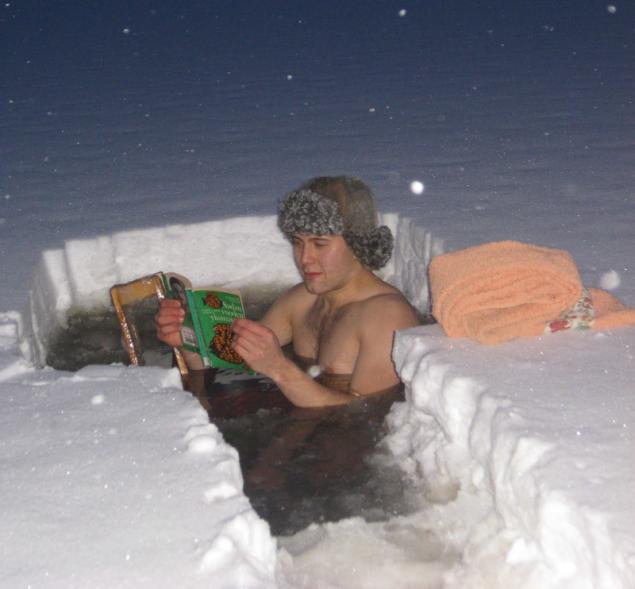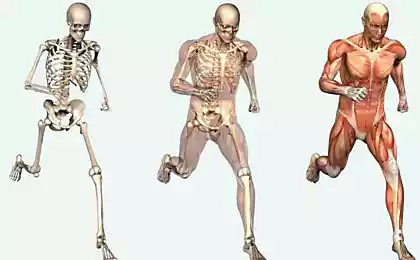472
Winter swimming — if you do decide ...

Materials biennial medical examinations lovers of cold tempering indicate that its use is not limited to increasing resistance to colds, it is much more. A significant part of the observed prior to the hardening suffered from various diseases and, as shown by the data of the survey was to toughen up to improve your health and get rid of the disease. Enjoy winter sailing in most cases led to the elimination of existing diseases and to their significant decline. After a year or two of training, these people have not expressed complaints, many of them said that now they can carry a significant load and does not feel his age. Survey data have shown that their health has improved. Most of the increased vital capacity of the lungs, the excursion of the chest, muscle strength, adjusting to different climatic conditions. But, perhaps the most m visible indication of the use of hardening was that the number of colds in walruses decreased by five times, and the number of non disability by an average of one case of the disease — in 2.8 times. In the technique the term “hardening” refers to the giving of any substance properties of greater hardness. At the time the term was borrowed by the medicine. Speaking of hardening, usually mean the adaptation of the organism to the cold, but the meaning of this term is much wider. Under the hardening should be understood also increase the body's resistance to adverse effects of high temperature, wind, humidity, etc. If you do decide ...the Success of adaptations to the cold is provided only in the case that the tempering procedure is carried out systematically, continuous for months and years. And the need to observe the gradual build-up and impact, achieved by a gradual reduction of water temperature (air) and increasing the duration of the procedure.
Long breaks in quenched reduce developed resistance to low temperatures. Unwanted even 2-3-day passes. After forced interruption start treatments with less intense cold exposure. If you hardened the first year, before swimming, need to do a vigorous workout, people floating more than a year warming the warm-up conduct is not required.
Before entering the water, wet the face, arms, legs, chest, stomach and back. Then immerse yourself in the neck and popravite breaststroke enhanced working. Usually “walrus” not into head. The fact that the head is extremely sensitive to cooling, it will be hard to hold out in the hole in the allotted time. After bathing, immediately running to the locker room, stand on the Mat and quickly wiped off with a dry towel. Now, wipe your body with a palms. Motion when rubbing and massage of the limbs do from the periphery to the heart, chest and abdomen in a clockwise direction. You can now quickly get dressed.
In the first year of duration of bathing during the winter months should not exceed 25 C, for 2-3 years this procedure can last up to minute, and only with experience of 3-5 years or more of swimming to 1.5−2 minutes. In most cases, limited to 30 — 60 sec.
As the warm water duration of swimming increase. The duration of the swim adjust depending on the weather and your preparation. When winter swimming in the coldest winter months in full sufficient to float through the day. In the days without swimming and take shower with cold water. At other times of the year to swim, preferably 6 times a week (1 day is paid to the bath).
“Walrus” with the experience usually in the winter and swim daily. However, 2 bathing daily can not be allowed. It is necessary to prepare yourself not only to short-lived, intense and sudden cooling, but also to long-term, less pronounced strength of the cold stress. Tempering procedure should be conducted as to the background warming muscle warm-up and in a state of muscular rest. Engaging in winter swimming will pretty soon become a necessity, bringing vigor, spring mood, and most importantly — health.
Water temperature
TIME
Subsequendy
(swimmers 1 year)
Srednetagelaya (bathing 1-3 years)
The most healthy and hardened (swimmers 3-5 years or more)
2
5 — 20
30 – 40
1 min – 1 min 40s
4
5 – 25
35 – 60
1 – 2 min.
7
10 – 30
40 s 1 min 20 s
1 min 30 s – 3 min.
11
10 – 45
1 – 2 min.
2 min 10 s – 3 min 30
13
15 – 50
1 – 2: 30 am
2 min 40 s to 4 min 30 s
15
15 – 60
1 15 min – 3 min 20
3 min 30 s – 6 min.
19
30 s – 2 min.
2 min 30 s – 7 min.
8 – 11 min.
23
1 – 4 min.
6 – 17 min.
19 -25 min.
Source: www.medicus.ru/fitness/patient/morzhevanie-22113.phtml























